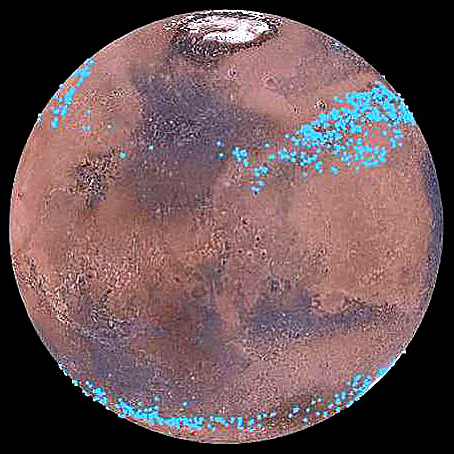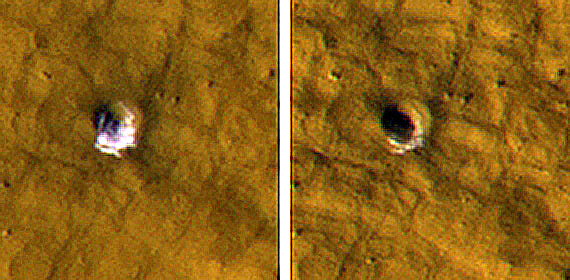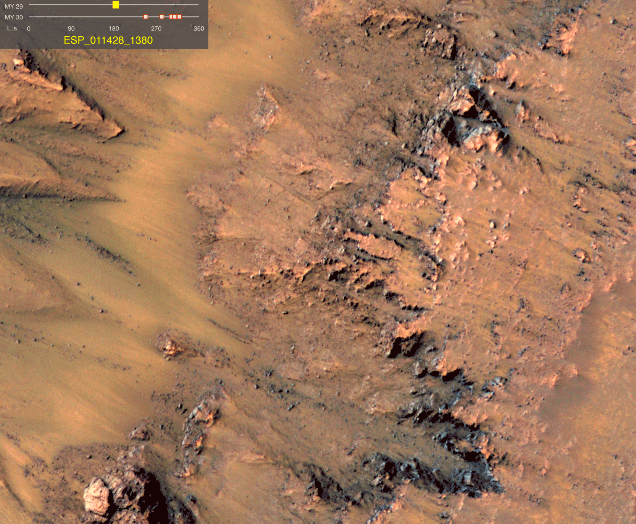When Mars Was Wet
Mars crater glacier, artist concept (credit: NASA)
The ice caps on Mars are made of water ice with seasonal carbon dioxide crusts. New photographic and radar discoveries are showing that Mars was not only wet, but could be in the future, and may be at present. Large bands of glacial ice have been discovered in both the northern and southern hemispheres on the Red Planet. This is a big change in understanding of contemporary environments on Mars.

Radar detected belts of buried glacial ice, Mars (credit: NASA/JPL)
The Mars Reconnaissance Orbiter (MRO) has provided images showing that glaciers exist in belts surrounding the planet in both the northern and southern hemispheres. According to NASA, data from the spacecraft's ground-penetrating radar also showed that that buried glaciers extend for dozens of miles from the edges of mountains and cliffs. The ice is covered by dust but it can get exposed when punctured by a meteor strike. A layer of rocky debris blanketing the ice may have preserved the glaciers as remnants when an ice sheet once covered the mid-latitudes during an earlier Martian ice age. The discovery is similar to Antarctica where glaciers have been detected under rocky coverings in the Dry Valleys on the frozen continent.

Meteor exposed ice covered by dust & debris, Mars (credit: JPL)
Using MRO radar measurements of Mars, researchers with the American Geophysical Union (AGU) have determined that enough water exist as buried glaciers. Under a warmer Martian climate, the melted water would create an ocean more than a meter deep over the entire planet. Additionally, JPL's Curiosity rover has gathered data showing Mars may even have a contemporary hydrologic cycle. Salts in the Martian soils act as absorptive materials that allow a briny water to remain liquid at night even in the low temperature and atmospheric pressure on the planet. The water evaporates from the soil back into the atmosphere as the sun rises.

Potential hydrologic moisture, Newton Crater on Mars (credit: NASA)
Seasonally liquid water on Mars, most likely also highly saline, may have also been observed seeping from south facing canyon walls during spring and summer months not unlike similar seeps from canyons in the southwestern USA. Piecing together a series of photographs from Newton Crater over an entire season has produced a dynamic animation of this Martian crater seepage in progress. Future robotic expeditions to such seeps will definitively resolve this issue.
Mars may be mostly a dry desert now but once it was far wetter and recent data now shows that it still has moisture in some places today. These would be the perfect places to look for any existing biological activity. It is often said: follow the water and that still remains the truth. WHB